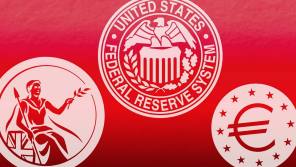

While fund flows into the asset class have struggled due to global headwinds, emerging market debt in terms of performance has been quite resilient.
Over 2023, EM hard currency indices and EM local currency indices returned low double-digit returns.
This was amid an aggressive Federal Reserve hiking cycle, heightened US treasury yield volatility, a disappointing post-Covid China reopening, looming geopolitical risks and two major wars.
The resilience of the asset class has been impressive, attributable to improving institutional strengths, hard-fought credibility of their central banks, in particular in their disciplined response to inflation, and a lengthening history of prudent macroeconomic policies.
Companies operating in these EM countries have benefited from this structural framework, enabling them to successfully access the international capital markets while at the same time developing and strengthening their local funding sources.
If US rate volatility eases, we could see EM fund flows turn positive as investors rotate back into the asset class, given the attractive yield and spread pick-up relative to developed market (DM) credits.
In addition, the technicals for the asset class remain supportive thanks to significant reduction in new external bond issuance over the past few years, combined with a prominent level of tenders, buybacks, and calls.
This has led to a shrinking EM debt stock.
Globally, it appears likely that we will see a disinflation cycle continuing through 2024. DM central banks, including the Fed, have removed their hiking bias, and are expected to begin easing monetary policy from restrictive levels this year.
Many EM central banks, which had hiked rates earlier and more aggressively than DM central banks, have already begun to ease.
On balance, investors could expect more accommodative monetary policy to support economic growth and favour the EM to DM growth differential.
China, the world’s second largest economy, should continue to grow around 5 per cent for 2024.
If needed, Beijing appears ready to increase support to prevent a sharp domestic growth slowdown. Policy support is likely to include liquidity measures, proactive fiscal policy, and monetary support.
US impact
A key trend that investors should be monitoring is market implications for the US election in November this year.
Whoever wins, the next administration likely will continue to support US domestic growth. Geopolitical risks need to be carefully monitored as they are the most likely potential source of economic headwinds.
The dollar is anticipated to somewhat rangebound over the near term, which is beneficial to the EM carry trade and dampens volatility in EM foreign currencies.
Over the medium term, broad dollar weakness is likely as the Fed begins a cutting cycle and global growth rebounds with support from China, while a deteriorating fiscal outlook in the US may deter dollar dominance.
A global recession, the US election cycle and an escalation of geopolitical conflicts are some of the key risks to EMs to monitor over 2024.
However, even if these risks materialise, differentiation across EM can allow active investment management to weather broad macro risks through credit selection within select countries, regions and sectors.
EM economies are certainly vulnerable to a global recession.
However, within a shallow growth deceleration, the higher quality EM credits with high carry may benefit, as EM credit spreads may widen less than the compression in treasury yields.
EM debt faces a potential headwind of heightened political uncertainty related to US foreign policy.
There could potentially be an increase of volatility leading up to the US presidential election as candidates campaign on a return to protectionist policies.
However, in the recent past, divisive campaign rhetoric toward foreign countries has been more a starting point for bilateral negotiations.
Additionally, some countries stand to benefit from these policy shifts, in particular from near-shoring and friend-shoring as the US and EU move supply chains away from China.
While geopolitical risks are hard to quantify and trade, certain regions are better able to weather these risks.
Latin America remains more insulated from conflicts within the Middle East, Europe and Asia. Indeed, EM commodity-linked economies, which tend to be low-cost producers, may benefit from higher commodity prices.
The asset class is a secular improving story that offers an immense opportunity to invest across different regions, countries, industries, currencies, and ratings.
Opportunities lie within the EM countries that have institutional strengths, supportive growth outlooks and increasing linkages to DMs, such as those within Latin America, with favourable outlooks in both Mexico and Brazil.
Latin America remains more insulated from geopolitical risks and stands to benefit from a near-shoring trend that is already beginning to boost foreign investment, particularly in the case of Mexico.
EM corporates have evolved into an asset class of its own, with a market capitalisation that far exceeds that of EM sovereigns and US high-yield bond market.
The fundamentals for EM corporates have remained quite resilient despite the macro uncertainties, thanks to overall conservative financial policies. Moreover, EM corporates offer an attractive spread pick-up relative to EM sovereigns and comparably rated DM credits.
Within EM corporates, we tend to favour the sectors that are strategic, for example those sectors deemed necessary for the smooth functioning of their domicile countries.
These sectors include banking, utilities, natural resources and transportation.
All said, the macro environment is largely favourable for EM debt with opportunities to invest in EM countries tyhat have a strong domestic story and in EM corporate credits, which have strong to improving credit fundamentals and a dedicated local investor base.
Su Fei Koo is a portfolio manager at DoubleLine



